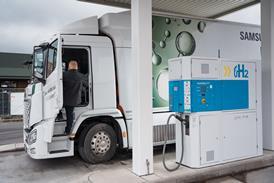Researchers at the Korea Advanced Institute of Science and Technology (KAIST) have developed an innovative method to enhance the performance of iron- and nitrogen-doped carbon electrodes in hydrogen fuel cells. This breakthrough could potentially replace expensive platinum catalysts, offering a solution that is approximately 1,000 times cheaper.

Scientists at the Korea Advanced Institute of Science and Technology (KAIST) have achieved a significant advancement in the development of hydrogen fuel cells by enhancing the performance of iron- and nitrogen-doped carbon electrodes. This breakthrough could potentially replace the costly platinum catalysts commonly used, offering a solution that is approximately 1,000 times cheaper, according to a recent study.
Platinum catalysts are known for accelerating the oxygen reduction reaction that occurs at the cathode in hydrogen fuel cells. While they improve performance, they also produce intermediaries like hydrogen peroxide, which can gradually damage the equipment over time.
A study published in the peer-reviewed journal ACS Catalysis detailed the KAIST research team’s findings. They discovered that iron- and nitrogen-doped carbon (Fe-N-C) electrodes have the ability to bind to oxygen, preventing the final desorption step of intermediaries. However, by treating these electrodes with phosphine gas, a FeN3PO moiety forms in the molecule. This molecular structure accelerates the oxygen reduction reaction without generating intermediaries. Notably, this method yielded peroxides at less than 5% when tested.


















